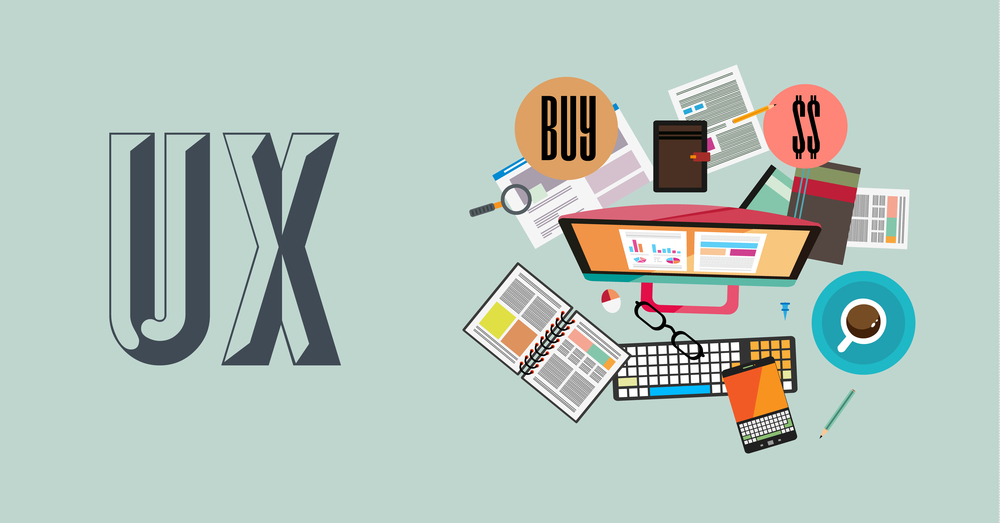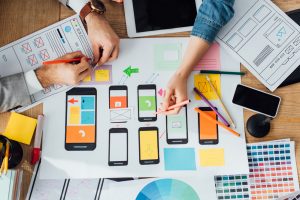5 August 2022

Key steps to effective website design!
Whether your goal is to increase brand awareness or to sell a product or service. Effective website design can be the difference between a new conversion and a lost prospect. Your website is how users learn what your brand is all about. The last thing you want is for a poorly designed website to dissuade site visitors from becoming customers. Here are a few points to keep in mind.
User experience design (UX design, UXD, UED, or XD) is the process of creating evidence-based, interaction designs between human users and products or websites. Design decisions in UX design are driven by research, data analysis, and test results rather than aesthetic preferences and opinions. Unlike user interface design, which focuses solely on the design of a computer interface, UX design encompasses all aspects of a user’s perceived experience with a product or website, such as its usability, usefulness, desirability, brand perception, and overall performance. UX design is also an element of the customer experience (CX), which encompasses all aspects and stages of a customer’s experience and interaction with a company.
The field of user experience design is a conceptual design discipline and has its roots in human factors and ergonomics, a field that, since the late 1940s, has focused on the interaction between human users, machines, and the contextual environments to design systems that address the user’s experience. With the proliferation of workplace computers in the early 1990s, user experience started to become a positive insight for designers. User experience design draws from design approaches like human-computer interaction and user-centered design, and includes elements from similar disciplines like interaction design, visual design, information architecture, user research, and others.
Information architecture
Information architecture is the art and science of structuring and organizing the information in products and services to support usability and findability.
In the context of information architecture, information is separate from both knowledge and data, and lies nebulously between them. It is information about objects. The objects can range from websites, to software applications, to images and content etc. It is also concerned with metadata: terms used to describe and represent content objects such as documents, people, process, and organizations. Information architecture also encompasses how the pages and navigation are structured.
Usability
Usability is the extent to which a product can be used by specified users to achieve specified goals with effectiveness, efficiency and satisfaction in a specified context of use.
Usability is attached to all tools used by humans and is extended to both digital and non-digital devices. Thus, it is a subset of user experience but not wholly contained. The section of usability that intersects with user experience design is related to humans’ ability to use a system or application. Good usability is essential to positive user experience but does not alone guarantee it.
Accessibility
After research, the designer uses the modeling of the users and their environments. User modeling or personas are composite archetypes based on behavior patterns uncovered during research. Personas provide designers a precise way of thinking and communicating about how groups of users behave, how they think, what they want to accomplish and why. Once created, personas help the designer to understand the users’ goals in specific contexts, which is particularly useful during ideation and for validating design concepts. Other types of models include workflow models, artifact models, and physical models.

Design
When the designer has a firm grasp on the user’s needs and goals, they begin to sketch out the interaction framework (also known as wireframes). This stage defines the high-level structure of screen layouts, as well as the product’s flow, behavior, and organization. There are many kinds of materials that can be involved during this iterative phase, from whiteboards to paper prototypes. As the interaction framework establishes an overall structure for product behavior, a parallel process focused on the visual and industrial designs. The visual design framework defines the experience attributes, visual language, and the visual style.
Once a solid and stable framework is established, wireframes are translated from sketched storyboards to full-resolution screens that depict the user interface at the pixel level. At this point, it is critical for the programming team to collaborate closely with the designer. Their input is necessary to create a finished design that can and will be built while remaining true to the concept
Test and iterate
Usability testing is carried out by giving users various tasks to perform on the prototypes. Any issues or problems faced by the users are collected as field notes and these notes are used to make changes in the design and reiterate the testing phase. Aside from monitoring issues, questions asked by users are also noted in order to identify potential points of confusion. Usability testing is, at its core, a means to “evaluate, not create”.
Accessibility of a system describes its ease of reach, use, and understanding. In terms of user experience design, it can also be related to the overall comprehensibility of the information and features. It helps shorten the learning curve associated with the system. Accessibility in many contexts can be related to the ease of use for people with disabilities and comes under usability. In addition, accessible design is the concept of services, products, or facilities in which designers should accommodate and consider for the needs of people with disabilities. According to the Web Content Accessibility Guidelines (WCAG), all content must follow by the four main principles of POUR: Perceivable, Operable, Understandable and Robust.
WCAG complianceKey
Web Content Accessibility Guidelines (WCAG) 2.0 covers a wide range of recommendations for making Web content more accessible. This makes web content more usable to users in general. Making content more usable and readily accessible to all types of users enhances a user’s overall user experience.
“Design is not just what it looks like and feels like. Design is how it works,” -Steve Jobs. The success or failure of your website hinges most heavily on usability and functionality. A beautiful website means nothing if it doesn’t have an effective user experience.
Nexonta Technologies Inc.
On to the next Level
Source: Wikipedia



